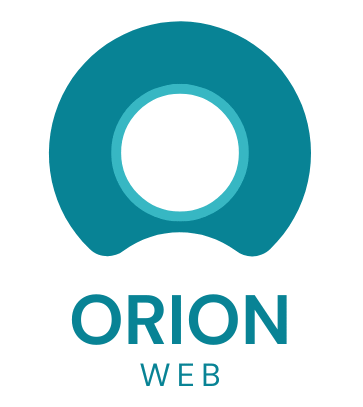Imagine a patient with congestive heart failure whose smartwatch detects subtle fluid retention changes days before traditional symptoms appear. This data, seamlessly and securely transmitted to their care team, triggers a preemptive medication adjustment, preventing a costly and traumatic hospital readmission. This is the promise of the Internet of Bodies (IoB)—a network of interconnected devices that monitor, analyze, and even modify the human body. But as we integrate technology more intimately with our biology, critical questions arise: How do we safeguard this incredibly sensitive data? What ethical lines must we draw?
This article is for healthcare professionals, developers, and ethically-minded individuals navigating this new frontier. We will explore how platforms like iofbodies.com are not only providing the technological backbone for innovative health solutions but are also establishing the essential security and ethical frameworks required for responsible progress. You will learn about its core applications, its unwavering commitment to standards like HIPAA, and its thoughtful approach to the profound ethical considerations, including those surrounding anatomical donation for education and research.
The Technological Core: Understanding iofbodies.com Applications
At its heart, iofbodies.com is a sophisticated platform designed to bridge the gap between raw biological data and actionable health insights. It serves as a centralized, secure hub for managing the vast streams of information generated by the modern IoB ecosystem.
Biosensor Integration and Real-Time Health Monitoring
The foundation of the IoB is the biosensor. From continuous glucose monitors and ECG patches to advanced trackers measuring stress through heart rate variability, these devices generate a constant flow of physiological data. iofbodies.com is built to ingest this data from a wide array of wearable technology and medical devices, ensuring cross-platform compatibility.
The critical differentiator lies in its approach to data synchronization. Instead of relying on periodic batch updates, the platform utilizes real-time data streaming protocols akin to CDC (Change Data Capture) or Pub-Sub models. This means that a critical change in a patient’s status—like a sudden spike in blood pressure or a dangerous drop in blood oxygen—is communicated instantly. For clinicians, this shift from retrospective review to real-time awareness enables immediate intervention, fundamentally changing the paradigm from reactive care to proactive health management.
Building Custom Health Solutions with APIs
The true power of iofbodies.com is unlocked through its robust Application Programming Interfaces (APIs). These APIs allow developers and healthcare organizations to build tailored applications without starting from scratch. The core features of these APIs include:
- Immediate Data Retrieval: Access to clean, standardized data in formats like JSON or FHIR, ready for integration into custom dashboards or electronic health record (EHR) systems.
- Secure Protocols: All data access is governed by OAuth 2.0 and other industry-standard authentication methods, ensuring that only authorized applications and users can retrieve information.
- Modular Design: Developers can pick and choose the specific data streams and functionalities they need, allowing for the creation of highly specialized applications—from a remote physical therapy adherence app to a complex chronic disease management portal for a large hospital system.
This modularity is key to scalability and maintainability. A startup can build a minimal viable product quickly, while a large research institution can develop a comprehensive data analytics platform, all on the same reliable and secure foundation.
Security and Trust: The iofbodies.com Commitment to HIPAA Compliance
In healthcare, innovation is meaningless without trust. Handling Protected Health Information (PHI) carries immense responsibility, and iofbodies.com is architected from the ground up to meet and exceed the stringent requirements of the Health Insurance Portability and Accountability Act (HIPAA).
Multi-Layered Security Protocols
Security is not a single feature but a pervasive philosophy embedded in every layer of the platform:
- End-to-End Encryption: All data, both at rest in secure databases and in transit between devices and the cloud, is protected using advanced SSL/TLS 1.3 encryption, rendering it unreadable to any unauthorized party.
- Strict Access Control: A combination of two-factor authentication (2FA) and Role-Based Access Control (RBAC) ensures that users can only access the information essential to their role. A primary care physician might see a full patient history, while a lab technician only sees relevant test results.
- Data Integrity Checks: Automated validation and fuzzy matching algorithms scan incoming data for anomalies or inconsistencies, safeguarding against corruption and ensuring the accuracy that clinical decisions depend on.
Adhering to HIPAA’s Three Main Rules
iofbodies.com’s compliance framework is explicitly designed around HIPAA’s core rules:
- The Privacy Rule: The platform enforces strict policies on the use and disclosure of PHI. Patients must provide explicit consent for how their data is used, and those permissions are rigorously enforced by the system.
- The Security Rule: This is operationalized through administrative safeguards (comprehensive risk assessments and employee training), physical safeguards (secure data center infrastructure), and technical safeguards (the encryption and access controls mentioned above).
- The Breach Notification Rule: In the unlikely event of a security incident, iofbodies.com has clear, prompt protocols for identifying, reporting, and mitigating any breach, in full compliance with legal requirements.
Furthermore, the platform provides robust tools for de-identifying and anonymizing data, enabling secure and ethical partnerships with third-party researchers who can advance medical science without compromising individual patient privacy.
Navigating the Ethical Frontier of IoB and Body Donation
Technology and security set the stage, but ethics must direct the play. The IoB raises profound questions about our humanity, autonomy, and the very definition of privacy. iofbodies.com recognizes that its responsibility extends beyond code into the realm of moral stewardship.
The Broader Ethics of the Internet of Bodies (IoB)
The ethical use of IoB technology rests on several pillars:
- Transparency and Autonomy: Users must have a clear, unambiguous understanding of what data is being collected, how it is used, and who has access to it. iofbodies.com prioritizes user control, allowing individuals to grant, modify, or revoke consent at any time.
- Data Bias and Equity: Algorithms trained on non-representative data can perpetuate health disparities. There is a responsibility to ensure that the benefits of IoB technology are accessible and equitable across diverse populations.
- Psychological Impact: Constant health monitoring can lead to anxiety or “cyberchondria.” Ethical design must consider the mental well-being of users, presenting data in a way that informs rather than alarms.
iofbodies.com and the Ethics of Anatomical Donation
While often discussed separately, the ethical principles governing the digital “body” of data and the physical body itself are deeply connected. iofbodies.com extends its ethical framework to its role in facilitating education and research involving anatomical donation. This involves a solemn commitment to:
- Informed Consent: Ensuring that donors and their families provide fully informed, voluntary consent, understanding how their gift will be used for education (e.g., in medical schools) or surgical training.
- Respect and Dignity: Establishing strict guidelines for the respectful and dignified treatment of human remains, honoring the profound gift of donation. This includes protocols for handling, storage, and final disposition.
- Cultural and Religious Sensitivity: Actively accommodating the diverse cultural and religious beliefs of donors and their families throughout the process.
By championing these ethical standards, iofbodies.com helps ensure that the pursuit of medical knowledge—whether through data analytics or anatomical study—is conducted with the utmost respect for the individuals who make it possible.
Quality Assurance and Deployment: Ensuring Reliability
In a field where software errors can have direct consequences for patient safety, rigorous quality assurance (QA) is not optional—it is a core component of clinical-grade software development.
Comprehensive Testing Strategies
The platform’s development lifecycle incorporates multiple layers of testing:
- Unit and Integration Testing: Every individual component and its interactions with other parts of the system are thoroughly tested to ensure they function as intended.
- Performance and Load Testing: Systems are stressed under heavy data loads to guarantee stability and responsiveness during peak usage, preventing downtime when patients and providers need it most.
- Edge Case Validation: Special attention is paid to boundary conditions and rare scenarios to ensure the system behaves predictably in all situations, safeguarding patient safety.
The CI/CD Pipeline for Health Tech
iofbodies.com employs a modern Continuous Integration/Continuous Deployment (CI/CD) pipeline, specifically adapted for the regulated healthcare environment. This means:
- Build Automation and Testing: Code changes are automatically integrated, built, and subjected to a battery of automated tests, catching errors early and often.
- Staged Deployment: Updates are not pushed directly to the live production environment. They are first deployed to staging environments that mirror production for final verification.
- Compliance as Code: Security and compliance checks are automated within the pipeline, ensuring that every release adheres to HIPAA standards before it is ever deployed.
This disciplined approach minimizes risk and ensures that the platform remains both cutting-edge and critically reliable.
Conclusion
The Internet of Bodies represents a tectonic shift in healthcare, offering unprecedented potential for personalized, proactive medicine. However, this future can only be realized on a foundation of unshakable security and thoughtful ethics. iofbodies.com provides more than just a technological platform; it offers a principled framework for developers, providers, and researchers to innovate with confidence.
By seamlessly integrating real-time biosensor data, enabling custom solution development through secure APIs, and adhering to the highest standards of HIPAA compliance and ethical conduct, iofbodies.com positions itself as a vital partner in building the responsible future of connected health. The challenge is not just to connect bodies to the internet, but to do so in a way that protects, respects, and ultimately enhances human life.
Call to Action: Ready to build secure, compliant, and ethical health solutions? Explore the developer resources and ethical guidelines at iofbodies.com to learn how you can leverage this powerful platform to advance your projects and contribute to the future of medicine.

